Natural resources of Russia are the riches of nature that people use in life and economic activity... All resources are divided into two groups: exhaustible and inexhaustible.
Exhaustible resources of nature are subdivided into renewable (water, soil, vegetation, animal world) and non-renewable(part of the exhaustible resources that are not capable of self-healing in a short time). These include minerals: oil, natural gas, coal, ore and non-metallic minerals. Their reserves in the bowels of the Earth are limited, and replenishment is impossible, since the formation of minerals occurs over millions of years.
The second group, which includes inexhaustible natural resources, includes solar energy, wind power, internal heat, energy of the ebb and flow. They are considered inexhaustible because their use does not deplete stocks.
Types of natural resources
By origin, natural resources are divided into mineral, land, water and forest resources.
Minerals and rocks are called mineral resources. By origin, they are divided into sedimentary (coal, oil, oil shale, salt, limestone, chalk), magmatic (ores of iron, chromium, copper and other metals) and metamorphic (gneisses, shale, quartzite). By use mineral resources are divided into fuel (combustible), ore (metallic) and nonmetallic (non-metallic).
- Combustible minerals are oil, natural gas, coal, peat, oil shale.
- Ore - iron, copper, aluminum ores, rare and precious metal ores.
- Nonmetallic minerals - chemical raw materials, building materials, precious and semi-precious stones.
- Mineral resources are sometimes used as they are. in which they are found in nature (marble, table salt, mica), or are certain chemical elements(iron from ore).
There are certain patterns in the formation and distribution of minerals, and they are associated with internal structure the earth's crust. A huge amount of minerals is extracted from the bowels of the Earth every year. Scientists have calculated that the amount of mineral raw materials extracted in just one year would be enough to fill a train 700 thousand km long, which could gird 17 times Earth along the equator. However, less than 20 percent of this huge mountain mass is used by humans. The rest of the rocks remains in dumps.
In the foreseeable future, humanity will face an acute problem of the lack of mineral resources. The demand for them is growing, and the most accessible deposits are rapidly depleting. Currently, work is underway to study the possibility of reusing resources, that is, the maximum use of industrial and domestic waste. An example of this is Japan, as well as countries Western Europe... In a matter of seconds, Japan is able to disassemble an old car, sort ferrous and non-ferrous metals, glass and other materials and reuse them for the production of steel, aluminum, copper.
Irrational use of renewable resources of nature can lead to the loss of their self-healing ability. This primarily applies to flora and fauna. Thoughtless use of plant and animal resources leads to the extinction of certain species of plants and animals.
- Back
- Forward
Grape
In gardens and in private plots, you can choose a warmer place for planting grapes, for example, on the sunny side of the house, garden pavilion, veranda. It is recommended to plant grapes along the border of the plot. The vines formed in one line will not take up much space and at the same time will be well lit from all sides. Near buildings, grapes must be placed so that water flowing from the roofs does not fall on it. On level ground, it is necessary to make ridges with good drainage due to drainage furrows. Some gardeners, in the experience of their colleagues in the western regions of the country, dig deep planting holes and fill them with organic fertilizers and fertilized soil. Pits dug in waterproof clay are a kind of closed vessel that fills with water during monsoon rains. In fertile soil, the root system of grapes develops well at first, but as soon as waterlogging begins, it suffocates. Deep holes can play a positive role in soils where there is good natural drainage, permeable subsoil or reclamation artificial drainage is possible. Planting grapes
It is possible to quickly restore an obsolete grape bush by the method of layering ("katavlak"). For this purpose, healthy vines of a neighboring bush are laid in grooves dug to the place where the dead bush used to grow, and sprinkled with earth. A top is brought to the surface, from which a new bush then grows. Lignified vines are laid on layering in spring, and green vines in July. They are not separated from the mother bush for two to three years. A frozen or very old shrub can be restored by short pruning to healthy aboveground parts or by pruning to the “black head” of an underground stem. In the latter case, the underground bole is freed from the ground and cut down entirely. Not far from the surface, new shoots grow from dormant buds, due to which a new bush is formed. Grape bushes, neglected and severely damaged by frost, are restored due to stronger fatty shoots formed in the lower part of the old wood, and the removal of weakened sleeves. But before removing the sleeve, form a replacement for it. Grape care
A gardener who starts growing grapes needs to study well the structure of the vine and the biology of this interesting plant. Grapes are lianas (climbing) plants, they need support. But it can creep along the ground and take root, as is observed in wild-growing Amur grapes. The roots and the aerial part of the stem grow rapidly, branch strongly and reach large sizes. Under natural conditions, without human intervention, a branched bush of grapes grows with many vines of various orders, which late begins to bear fruit and gives a crop irregularly. In cultivation, the grapes are formed, give the bushes a form that is easy to care for, providing a high yield of high-quality bunches. Vine
Schisandra
In the literature on climbing vines, the methods of preparing the planting holes and the planting itself are unnecessarily complicated. It is proposed to dig trenches and holes up to 80 cm deep, lay drainage from broken bricks, shards, install a pipe for drainage for food, fill with special soil, etc. When planting several bushes in collective gardens, such preparation is still possible; but the recommended pit depth is not suitable for Of the Far East, where the thickness of the root layer at best reaches 30 cm and it is underlain most often by a waterproof subsoil. Whatever drainage is laid, a deep hole will inevitably turn out to be a closed vessel, where water will accumulate during the monsoon period, and this will entail damping out and rotting of the roots from lack of air. And the roots of lianas actinidia and lemongrass, as already noted, spread in the taiga in the surface layer of the soil. Planting lemongrass
Schizandra Chinese, or schizandra, has several names - lemon tree, red grapes, gomisha (Japanese), cochinta, kozyanta (Nanai), Kolchita (Ulchi), usimtya (Udege), uchampu (Oroch). In terms of structure, systemic relationship, center of origin and distribution, Schisandra chinensis has nothing to do with the real citrus plant lemon, but all its organs (roots, shoots, leaves, flowers, berries) exude a lemon scent, hence the name Schizandra. The lemongrass vine, clinging or twining around the support, along with the Amur grapes and three species of actinidia, is an original plant of the Far Eastern taiga. Its fruits, like real lemon, are too sour for fresh consumption, but they have medicinal properties, a pleasant aroma, and this has attracted a lot of attention to it. The taste of Schisandra chinensis berries slightly improves after freezing. Local hunters who consume such fruits claim that they relieve fatigue, give the body vigor and improve vision. The consolidated Chinese pharmacopoeia, compiled back in 1596, says: "The fruit of the Chinese magnolia vine has five flavors and is classified as the first category of medicinal substances. The pulp of schisandra is sour and sweet, the seeds are bitter-astringent, and the overall taste of the fruit is salty. it has all five tastes. " Grow lemongrass
The world's natural resources are everything accessible to man components of living and inanimate nature, which he has the ability to use to meet his needs and requirements in the process of production and life. Located on the surface of the Earth's shell, they impress with their number and variety. So far, it is believed that planet Earth is the only place in the Universe suitable for human life. Today, the world's natural resources are the foundation of the economy and world production. The number of benefits of the planet used by people confirms this. The significant importance in the life of modern mankind has forced to streamline the natural resources of the world. They are all divided into two types.
Classification
1. Exhaustible. These are natural goods, the demand for which exceeds the rate of their formation. Since the production side regularly receives requests, sooner or later the moment comes when the reserves of this natural resource are completely depleted. But is this situation hopeless? Fortunately, no, because exhaustible reserves, in turn, are divided into:
- renewable;
- non-renewable.
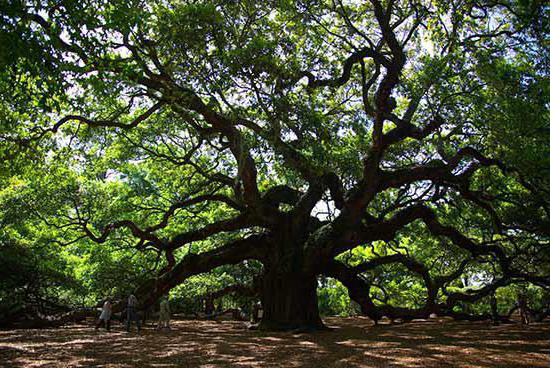
Renewable reserves natural resources worlds mean that they can be used almost indefinitely, however, it is important to provide the right time for their renewal, otherwise they will turn into non-renewable. The former include the purity of air, water and soil, as well as vegetation and fauna. 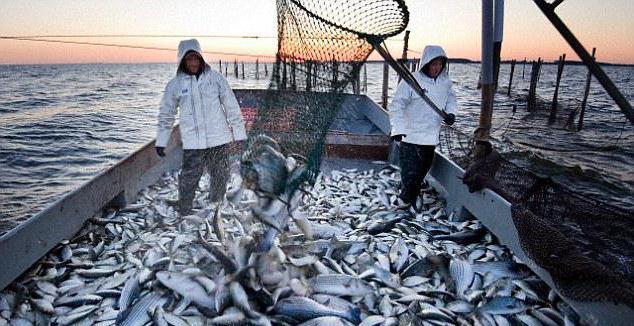 appear as a result of various ore formation processes that take place in the upper layers of the earth's crust. The demand for such minerals is hundreds of times higher than their estimated quantity, and since their reserves are negligible compared to consumption, the chances of their renewal are zero. These include the mineral reserves of the planet.
appear as a result of various ore formation processes that take place in the upper layers of the earth's crust. The demand for such minerals is hundreds of times higher than their estimated quantity, and since their reserves are negligible compared to consumption, the chances of their renewal are zero. These include the mineral reserves of the planet.
2. Inexhaustible. These are all those that almost every inhabitant of the Earth has in abundance: air, water, wind energy. They are so familiar to everyone that sometimes they simply cease to be appreciated, but without these resources, human life would become impossible.
Classification of natural reserves by types of their use
All types of natural resources of the world are actively used by people in two main directions:
- agricultural sector;
- industrial production.
Agricultural resources combine all types of natural resources that are aimed at creating agricultural products and making a profit. For example, agro-climatic reserves provide an opportunity for the cultivation and further use of various cultivated plants and grazing livestock. Without water, it is generally impossible to imagine the proper functioning of the rural industry. Here it plays a key role, as it is used for irrigation of crops and other crops, as well as for watering livestock. Fortunately, most of the natural resources used in this area are inexhaustible (water, soil, air).
High demand for minerals
Industrial production has its own system of consumption of world reserves. The number of factories, factories and enterprises has reached its maximum today. A variety of means are needed to meet their demand. V modern world there is the greatest need for them and they have the greatest financial value. These are oil, gas, coal and bitumen (refer to energy reserves). 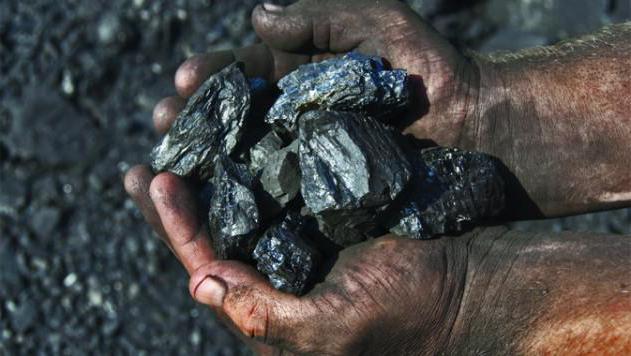
Some species
The group of useful natural resources also includes forest, land and water resources. Although they are not energetic, they are all valuable as they contribute to the expansion of industrial activities. They are also actively used in the construction industry.
Inexhaustible water resources
Most scientists agree that the oceans are full of reserves useful for humanity. This is a huge storehouse of salts, minerals and more. It is generally accepted that the seas and oceans contain no less natural benefits than all the land together. Take for example sea water... For every inhabitant of the Earth, there are almost three hundred million cubic meters of this salty life-giving moisture. And these are not just dry numbers. One cubic meter of salty sea liquid contains a huge amount of salt (table), magnesium, potassium and bromine. It is noteworthy that even gold is present in chemical composition water. She is truly precious! In addition, it serves as a continuous source for the extraction of iodine.
But the seas and oceans are not only rich in water. Countless minerals are mined from the bottom of the world's oceans. It is common knowledge that of all, oil and gas play the most important role. Black gold is mined primarily from Gas also makes up about ninety percent of the natural reserves that are mined from the seabed.
But this is not the only value for the global industry. The main wealth of deep-sea deposits is ferromanganese nodules. These amazing materials, formed at great depths, can contain up to thirty different metals! The first attempt to get them from the seabed was made by the United States of America in the seventies. They chose the waters of the Hawaiian Islands as the object of their research.
Geographic distribution of natural goods on the surface of the Earth
The geography of the world's natural resources is quite diverse. Recent facts have confirmed that the most effective land resources used by countries such as the United States of America, India, Russia and China. Huge areas for arable land and land cultivation enable these countries to make full use of the land reserves of nature. If we talk about mineral springs, then their distribution is not entirely even. Ores are mainly located in the central and eastern parts Europe.  The largest oil fields are located in the depths of the North Sea and Atlantic Ocean... Iraq, Saudi Arabia, Russia and China also have a large amount of reserves of this good. Unfortunately, the natural resources of the countries of the world are rapidly dwindling. For humanity, the point of no return is becoming more and more real.
The largest oil fields are located in the depths of the North Sea and Atlantic Ocean... Iraq, Saudi Arabia, Russia and China also have a large amount of reserves of this good. Unfortunately, the natural resources of the countries of the world are rapidly dwindling. For humanity, the point of no return is becoming more and more real.
Problems and prospects associated with the use of natural reserves
The environment is a complex and not fully explored world. People have only slightly opened the veil of secrets and mysteries of the only "living" planet. Since the dawn of human history, they have tried to conquer the elements of nature for their own good. As you can see, a person has always had a significant impact on ecological state Earth. Over time, it intensified more and more. New technologies and scientific progress have played a fundamental role in this. Unfortunately, human invasion of nature has caused the world's natural resource problems.
New opportunities for humanity
In the first centuries, the inexhaustible biological resources of nature were more used, but now, in an age of progress, people penetrated the seabed, deep into the mountain ranges and drilled wells tens of meters into the earth. This made it possible to find hitherto inaccessible natural resources. People have carefully studied the components of the natural environment. Minerals, ore and coal deposits have opened the door to the use of powerful energy.
Fatal errors
However, along with high scientific and technological advances, serious environmental problems have emerged. And, unfortunately, the human hand is mostly to blame for this. His vigorous activity has become the main cause of the problems associated with natural resources. Recently, the word "ecology" has begun to be heard more and more often. Everybody is thirsty clean water, breathe clean fresh air and not get sick, but few people think that this requires the conscious efforts of everyone. 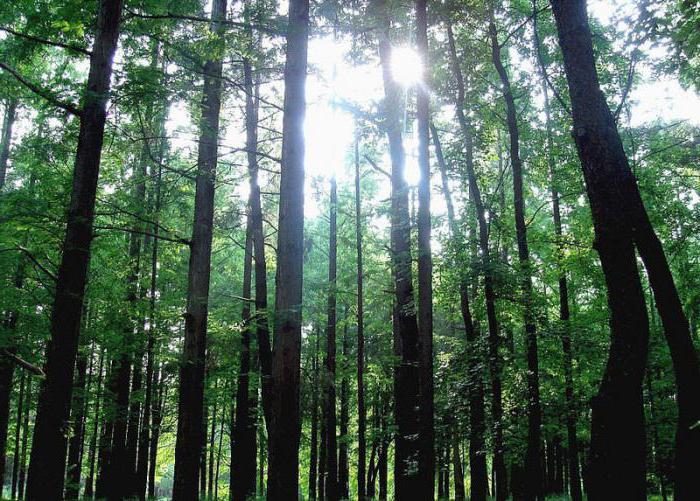 Indeed, over the years of mankind's life on Earth, the useful components of the natural environment have significantly decreased, and environmental pollution has reached its peak. If we talk about the state of the atmosphere, then its age-old shell has become so thin that it can soon provoke an ecological catastrophe. The reason for this was uncontrolled waste emissions from enterprises. Toxic vapors and harmful gases inflict strong blows on the state of the biosphere.
Indeed, over the years of mankind's life on Earth, the useful components of the natural environment have significantly decreased, and environmental pollution has reached its peak. If we talk about the state of the atmosphere, then its age-old shell has become so thin that it can soon provoke an ecological catastrophe. The reason for this was uncontrolled waste emissions from enterprises. Toxic vapors and harmful gases inflict strong blows on the state of the biosphere.
The water is also not in the best condition. There are very few rivers left on the planet that would be free of pollution and debris. Together with waste water, a huge amount of pesticides and other fertilizers gets into them. Most sewers and drainage canals also lead their polluted waters to rivers and seas. This provokes the rapid growth of mud - algae that harm river flora and fauna. Thousands of cubic meters of "dead" moisture enter the oceans every week. Nitrates and other poisons are increasingly seeping into the ground and underground waters.
Attempts by people to fix something
In most of the leading countries, laws on environmental conservation have been adopted today, but the threat of complete environmental pollution has not become less urgent.
The eternal confrontation between industrial companies and representatives international organization Greenpeace gives only temporary results. The second place in terms of pollution (after the atmosphere) is occupied by the water of the World Ocean. It tends to self-purify, but in reality this process does not have time to achieve its goal. The accumulation of debris in the waters is causing the mass extinction of many animal species.
Extraction of oil from the ocean floor is often unsuccessful, as a result of which huge oil spills appear on the surface of the water surface. Their oily structure does not allow oxygen to pass through and millions of living creatures living in the sea are unable to saturate their bodies with clean air.

Negative impact on wildlife
The release of toxic waste into rivers and seas affects even large inhabitants of the deep water. Large fish confuse garbage with food and swallow various tin and plastic items. These sad statistics show the problems and prospects of the future.
Humanity has yet to learn how to properly manage the ecosystem around it. People are created for a happy, and most importantly, healthy life on Earth. However, a number of mistakes have led the world to an almost ecological catastrophe.
Over time, it became clear that solving the problem fundamentally is possible only thanks to the responsible approach of every inhabitant of the planet. And the expression that “one is not a warrior in the field” is inappropriate here. In fact, each person has the ability to make a valuable contribution to conserving the world's natural resources. With a little thought, you can take concrete steps towards a clean environment. A good start there will be tree planting and garbage collection on its territory. Man cannot change the world, but everyone can change himself!
Phenomena and objects created in a natural way, regularly used by people to improve the quality of the level of existence, and the formation of material wealth, as well as creating conditions for the life of the human community are called natural resources.
The existing types of natural resources are classified into:
- Exhaustive.
- Restorative (soil, water, biological, recreational resources).
- Non-renewable (mineral, technical, chemical, etc.).
- Inexhaustible (energy of ebb, tide, sun, wind, etc.).
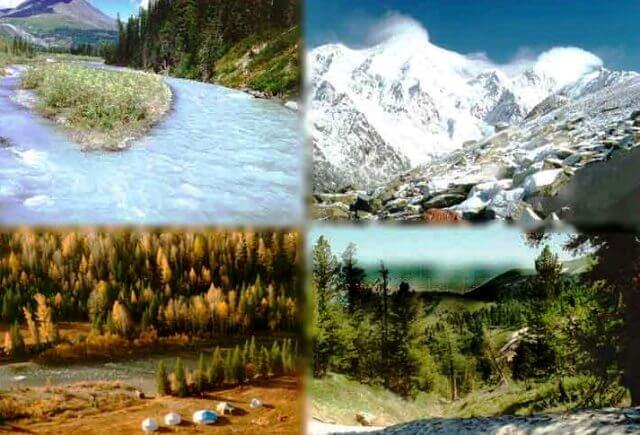
Formed according to the fundamental qualities:
- sources of origin;
- application in production;
- degree of exhaustion.
Due to resources have a big impact on the economy , as well as taking into account their natural origin, a corresponding systematization was developed.
- Natural (genetic)- which includes the entire stock of natural resources, including minerals; soil, water, forests; energy reserves. Combining plant and animal resources, we get another term - "Biological resources".
- Environmental- the basis, which includes the properties of depletion and renewability of resources.
If we consider the classification in the direction of a protected natural area, then a certain significance will be when dividing in the direction of the level of their depletion. According to the ecological position, the depletion of natural resources is an inconsistency that regulates the balance between the withdrawal of natural resources from the soil of the land to the needs of society.
When calculating the stock of resources, taking into account the volume that can be withdrawn for use, use the concept "Exhaustion"... According to this characteristic, resources can be:
- Inexhaustible. The constant consumption of this type of resources by a person does not lead to a significant decrease in their stock either in the present or in the future. For example, solar energy, forces of nature - wind, ebb, flow, etc.
- Exhaustible. Stocks with restrictions on quantitative consumption. However, some of these resources are capable of recovery if natural pathways are available or with human support.
- Drawn non-renewable. The constant consumption of this type of resources by a person carries the possibility of reducing their stock to the level where their further use is impossible, since this process will become inappropriate from the point of view of the economic approach. In addition, these resources cannot be restored in a period proportional to the period of use (mineral resources).
- Drawn renewable. Such resources are characterized by the ability to regenerate using a method of reproduction. However, this process is quite lengthy. This group should include flora, fauna, and water resources.
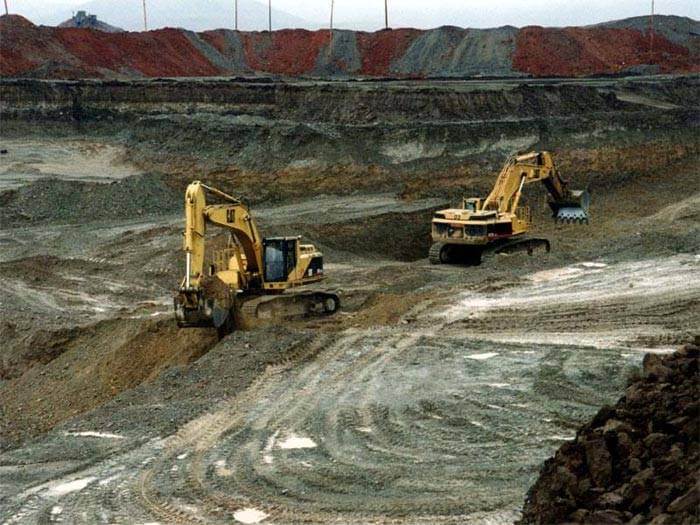
Economic systematization of resources
Such a group classification of resources is formed at an angle likely economic use... The current allocation order presupposes application-oriented groups in terms of technical capacity(real, potential) and rational and economic consumption(replaceable, irreplaceable).
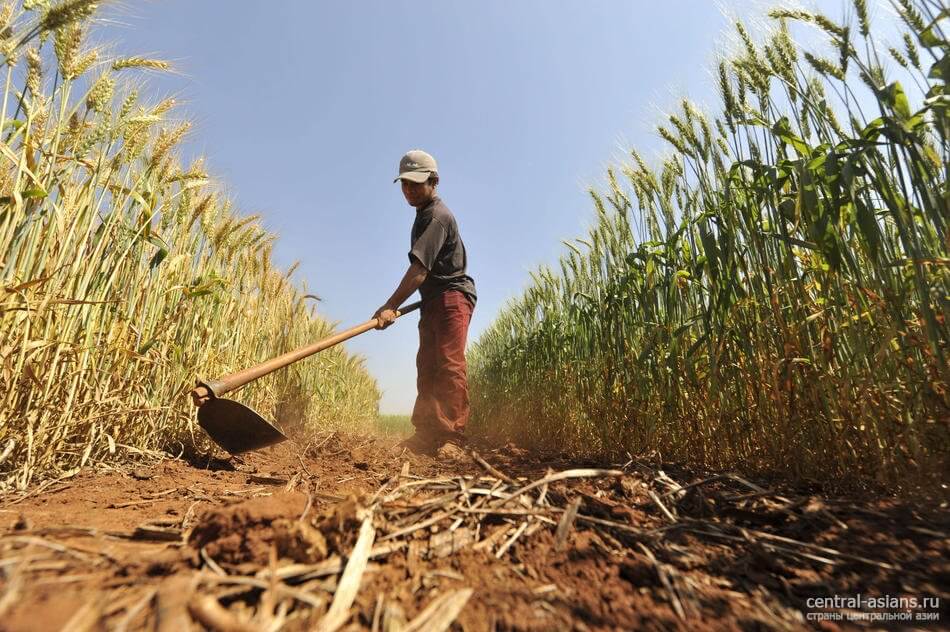
Systematization of resources from the angle of geological study
The fact of the availability of natural resources will be an important factor in maintaining the country's economy to an acceptable extent. A significant role in human life is assigned to such a resource as mineral raw materials.
Mineral reserves by the degree of geological research are classified into categories - A, B, C1, C2. The division into groups is directly proportional to the degree of reduction in the level of detail of the level of knowledge to the accuracy of determining the territorial location of the field.
In addition, according to the level of economic significance, minerals are subdivided into:
- balance sheet(assume the rationality of operation);
- off-balance(assume the lack of rationality of operation for various reasons).
The division of natural resources, taking into account the peculiarity that reflects the materiality in the field of economics and management, is often used classification by direction and types of household consumption... This taxonomy is based on the criterion of correlating resources to different areas of material production or non-production sphere. According to such properties, there is a natural division of natural resources - industrial and agricultural consumption.
The pooling of resources in the direction of industrial consumption includes all kinds of categories of natural raw materials that are used in industry. As for the area of a non-production nature, then such resources can be attributed to those reserves that are taken from the surrounding world, from the territory of reserves.

Other types of classifications
Today, one more resource classification system can be distinguished, formed according to the principle sources of origin:
- Biological resources.
- Mineral resources.
- Energetic resources.
To the concept "Biological resources" includes all living cells of the biosphere, capable of creating a habitat. This includes plants, animals, microorganisms, which contain genetic material.
To the concept "mineral resources" includes all elements of the lithosphere that can be used for economic use, as mineral raw materials or energy sources.
To the concept "energetic resources" include solar and space energy, as well as nuclear, fuel and thermal energy sources.

Summing up, a logical conclusion suggests itself that humanity has access to almost all resources provided by nature, including also resources of climatic and space origin, resources of the World Ocean, continents. However, society should think about the growth of consumer demand, which does not take into account such a concept as "resource availability".
Natural (natural) resources are natural objects and the phenomena that a person uses to create material goods that ensure not only the maintenance of the existence of mankind, but also a gradual increase in the quality of life.
Natural objects and phenomena are various bodies and forces of nature used by man as resources. Organisms, except for humans and, to a large extent, domestic animals, draw living energy resources directly from the natural environment, being part of biogeochemical cycles. These resources in their action can be considered as environmental factors, including as limiting, for example, most of the food resources.
Natural resources used by man are diverse, their purpose, origin, methods of use, etc. are diverse. This requires a certain systematization of them.
The classification is based on three criteria: by source of origin, by use in production and by the degree of depletion of resources.
Taking into account the natural origin of resources, as well as their enormous economic importance, the following classifications of natural resources have been developed.
Natural (genetic) classification - classification of natural resources by natural groups: mineral (minerals), water, land (including soil), plant, (including forest), fauna, climatic, natural energy resources processes ( solar radiation, internal heat of the Earth, wind energy, etc.). The resources of flora and fauna are often grouped under the concept of biological resources.
The ecological classification of natural resources is based on signs of depletion and renewal of resource reserves. The concept of exhaustion is used when taking into account the reserves of natural resources and the volumes of their possible economic withdrawal. Resources are allocated on this basis:
inexhaustible - the use of which by a person does not lead to an apparent depletion of their reserves now or in the foreseeable future (solar energy, internal heat, energy of water, air);
derived non-renewable - the continuous use of which can reduce them to a level at which further exploitation becomes economically impractical, while they are incapable of self-healing in terms commensurate with the terms of consumption (for example, mineral resources);
derived renewable - resources that are characterized by the ability to restore (through reproduction or other natural cycles), for example, flora, fauna, water resources, In this subgroup, resources are allocated with extremely slow rates of renewal (fertile land, forest high quality wood).
Economic, when natural resources are classified into different groups in terms of the possibilities of economic use:
according to the technical capabilities of operation, natural resources are allocated:
real - used at a given level of development of productive forces;
potential - established on the basis of theoretical calculations and preliminary work and including, in addition to precisely established technically available reserves, also the part that cannot currently be mastered according to technical capabilities;
according to the economic feasibility of replacement, they distinguish between replaceable and irreplaceable resources. For example, fuel and energy resources are referred to as replaceable (they can be replaced by other energy sources). The indispensable resources include atmospheric air resources, fresh water, etc.
An important role in the development of the economy is played by the degree of study of natural resources: the structure of the soil, the amount and structure of minerals, wood reserves and its annual growth, etc. Among natural resources, mineral raw materials play a special role in the life of society, and the degree of endowment with natural resources reflects the economic level of the state ... Depending on geological knowledge mineral resources are subdivided into the following categories:
A - reserves, explored and studied with the utmost detail, exact boundaries of occurrence, and which can be transferred to exploitation.
B - reserves, explored and studied in detail, ensuring the identification of the main conditions of occurrence, without an accurate display of the spatial position of the field.
C1 - reserves, explored and studied in detail, providing clarification in general terms of the conditions of occurrence.
C2 - reserves, explored, studied and estimated in advance by single samples and samples.
Moreover:
According to their economic value, minerals are divided into balance sheets, the exploitation of which is advisable in this moment, and off-balance ones, the operation of which is impractical due to the low content of the useful substance, the great depth of occurrence, the peculiarities of the working conditions, etc., but which in the future can be developed.
Resource group industrial production includes all types of natural raw materials used by industry. Due to the diversified nature of industrial production, the types of natural resources are differentiated as follows:
energy resources, which include various types of resources used at the present stage for energy production:
combustible minerals (oil, gas, coal, bituminous shale, etc.)
hydropower resources (river water energy, tidal energy, etc.);
sources of bioenergy (fuel wood, biogas from agricultural waste.);
sources of nuclear energy (uranium and radioactive elements).
Non-energy resources representing raw materials for various industries or participating in production according to its technical characteristics:
minerals that do not belong to the group of caustobiolites (ore and non-metallic);
water used for industrial production;
land occupied by industrial facilities and infrastructure;
industrial forest resources;
biological resources of industrial importance.
Agricultural production resources combine those types of resources that are involved in the creation of agricultural products:
agroclimatic resources of heat and moisture required for the production of cultivated plants and grazing;
soil and land - the earth and its top layer - the soil, which has a unique property to produce biomass;
plant biological resources - food resources;
water resources - water used for irrigation, etc.
The resources of the non-production sphere (non-production consumption - direct or indirect) include resources withdrawn from the natural environment (wild animals representing the objects of commercial hunting, medicinal raw materials of natural origin), as well as resources of the recreational economy, protected areas, etc.
The combination of natural and economic classifications makes it possible to identify the possibility of multidirectional use of various natural groups resources, as well as their replaceability, draw conclusions about the tasks of rational use and protection of certain species. According to the relationship of uses, there is the following classification:
resources of unambiguous use;
multipurpose resources, incl. interrelated (integrated) use (water resources), mutually exclusive (competing) use (land resources).
Other groups of natural resources can also be identified. For example, sources of homogeneous resources (mineral deposits, land, timber resources, etc.) are subdivided according to the amount of reserves and economic significance. Conditionally distinguish:
the largest (of national importance),
large (interdistrict and regional significance),
small (local).
Private classifications of natural resources are also being developed, reflecting the specifics of their natural properties and areas of economic use. An example of this type is various amelioration classifications, groups of rivers according to the degree of flow regulation, etc. The geological and economic classification of minerals according to the main directions of their use in industry is widely used:
fuel and energy raw materials (oil, gas, coal, uranium, etc.);
ferrous, alloying and refractory metals (iron, manganese, chromium, nickel, cobalt, tungsten ores, etc.);
noble metals (gold, silver, platinoids),
chemical and agronomic raw materials (potassium salts, phosphorites, apatites, etc.);
technical raw materials (diamonds, asbestos, graphite, etc.).
In market conditions of the economy, the classification of natural resources is of practical interest, taking into account, in particular, the nature of trade in natural raw materials. For example, you can highlight:
resources having strategic importance trade in which should be limited, since it leads to the undermining of the defense power of the state (uranium ore and other radioactive substances);
resources of wide export value and providing the main inflow of foreign exchange earnings (oil, diamonds, gold, etc.);
resources of the domestic market, which, as a rule, are ubiquitous, for example, mineral raw materials, etc.
According to the sources of origin, resources are subdivided into biological, mineral and energy resources.
Biological resources are all living environment-forming components of the biosphere: producers, consumers and decomposers with genetic material contained in them (Reimers, 1990). They are sources of material and spiritual benefits for people. These include commercial objects, cultivated plants, domestic animals, scenic landscapes, microorganisms, that is, plant resources, animal resources, etc. are of particular importance. Genetic resources are of particular importance.
Mineral resources are all usable material components of the lithosphere, used in the economy as mineral raw materials or energy sources. Mineral raw materials can be ore, if metals are extracted from it, and non-metallic, if non-metallic components (phosphorus, etc.) are extracted or used as building materials.
Energy resources are called the totality of the energy of the Sun and space, atomic energy, fuel and energy, thermal and other sources of energy.
The second criterion by which resources are classified is according to their use in production. This includes the following resources:
Land fund - all land within the country and the world, included by its purpose in the following categories: agricultural, settlements, non-agricultural purposes (industry, transport, mining, etc.). The world land fund is 13.4 billion hectares.
Forest fund - a part of the land fund of the Earth on which a forest grows or can grow, allocated for agriculture and the organization of specially protected natural areas; it is part of biological resources;
Water resources - the number of underground and surface waters that can be used for various purposes in the economy (fresh water resources are of particular importance, the main source of which is river waters);
Hydropower resources - those that a river, ocean tidal activity, etc. can provide;
Fauna resources - the number of inhabitants of waters, forests, sandbanks that a person can use without disturbing the ecological balance;
Mineral resources (ore, non-metallic, fuel and energy resources) - natural accumulation of minerals in earth crust, which can be used in the economy, and the accumulation of minerals forms their deposits, the reserves of which should be of industrial importance.
From an environmental point of view, it is important to classify resources according to the third criterion - according to the degree of depletion. Depletion of natural resources from an ecological point of view is a discrepancy between the safe standards for the withdrawal of a natural resource from natural systems and subsoil, and the needs of mankind (country, region, enterprise, etc.).
Inexhaustible resources - directly solar energy and the natural forces caused by it - for example, wind and tides exist forever and in unlimited quantities.
Exhaustible resources have quantitative limitations, but some of them can be renewed if there are natural possibilities for this, or even with the help of humans (artificial purification of water, air, increasing soil fertility, restoring the number of wild animals, etc.). However, a very important group of resources is not renewable. These include such relics of ancient biospheres as fuel and iron ore, as well as a number of metal ores of intraterrestrial (endogenous) origin. All of them have limited reserves in the lithosphere. These resources are finite and non-renewable.
Currently, humanity has access to climatic and space resources, the resources of the oceans and continents. Their quantitative consumption is constantly growing, their “assortment” is growing, often without taking into account resource availability.
Used Books
Akimova T.A., Khaskin V.V. Ecology. Tutorial... –M .: DONITI, 2005.
Yu.V. Novikov Ecology, environment and man. M., 2001.
Anything that is used to achieve a goal is called a resource. Their task is to meet the needs of the subjects of the environment.
Directional classification
Today, the following types of resources are distinguished:
More general concepts are economic, information and production resources.
Classification by type
With respect to this criterion, it is customary to distinguish between such types of resources as reproducible and not. The first type includes all accumulated and stored objects. All others are considered non-reproducible. In natural nature, the depletion of resources will be an analogue of the classification. Also, the typical criterion includes such properties of an object as substitutability, degree of consumption and origin.
Reproducible resources during operation retain their shape and can be used for other purposes (in the next steps). In the event of a long downtime, their degree of usefulness is lost and subsequently not compensated. That is why such resources are called “capacity”. These include people, mechanisms and working conditions (machines, machines).  Irreproducible resources at the end of the work are fully or partially consumed. In this case, the possibility of reuse is not allowed. This type of resource has no statute of limitations. They can be used both at the current time and in the distant future. The main property of this type of resource is the gradual consumption of the stock, that is, the lack of the ability to accumulate. Such resources are classified as "energy". Examples include objects of labor, fuel, finance.
Irreproducible resources at the end of the work are fully or partially consumed. In this case, the possibility of reuse is not allowed. This type of resource has no statute of limitations. They can be used both at the current time and in the distant future. The main property of this type of resource is the gradual consumption of the stock, that is, the lack of the ability to accumulate. Such resources are classified as "energy". Examples include objects of labor, fuel, finance.
Types of resources: financial
In economic theory, two main groups of the source of global potential can be distinguished. The first includes material types of resources, and the second - human. Today, there are many different combinations of production factors. Material resources include land and capital, human resources - entrepreneurial and labor abilities. All of these factors are directed towards the production of goods and the provision of services.
Financial resources are considered the main resources of the world economy. These include cash and securities, and receivables, and various investments, and other operations with capital. The peculiarity of these resources is that they are considered inexhaustible, that is, they cannot be fully consumed or used. In turn, many of them are accumulative.  The creation of financial resources is necessary for the interaction of the external and internal environment. They represent a separate type of communication between people and organizations.
The creation of financial resources is necessary for the interaction of the external and internal environment. They represent a separate type of communication between people and organizations.
Types of resources: production
This type includes not only various materials, finished products and services, but also all kinds of work variations. Production types of resources have one common feature- consumption. All the fruits of human and machine activity can be used in whole or in part, but in any case they are in demand.
The main aspect of production resources is profitability. In other words, how much the degree of cost will correspond to the final result (products, services). According to this criterion, resources can be profitable, moderate, unprofitable.
The mental and physical abilities of workers are responsible for the success of production. Both characteristics are combined in the workforce. They are the ones who play the most important role in the implementation of optimal production activities. In turn, this type of resource is limited by the working age criterion. In Russia, it will be between 16 and 59 for men inclusively, and between 16 and 54 for women. In some countries, it is possible to work from the age of 14 and retire by the age of 65.
Resource varieties: natural
Materials of this type are used for various needs, production of goods. Natural resources are a collection of objects and substances located on a certain territory of the planet. These are rivers, and lakes, and seas, and mountains, and animals, and plants. Of the subspecies, water, soil and forest resources are distinguished. 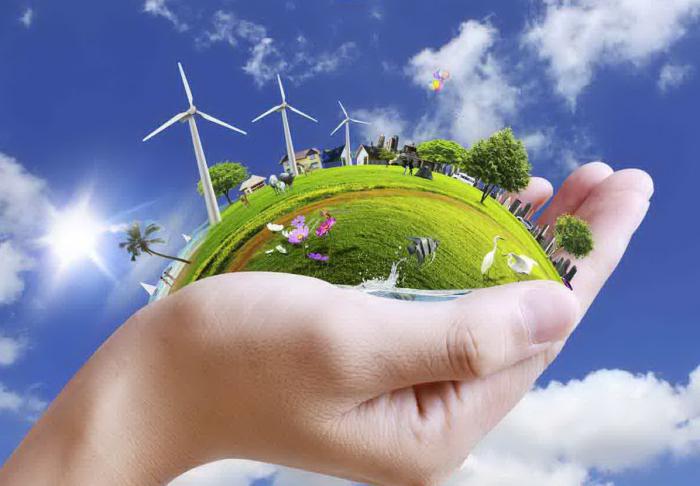 The earth's crust contains a huge variety of useful substances that are necessary for a comfortable human life. Therefore, it is she who is considered the main source of natural resources. It contains hundreds of minerals suitable for direct use or processing. For example, clay, sand, granite and other materials are indispensable in construction.
The earth's crust contains a huge variety of useful substances that are necessary for a comfortable human life. Therefore, it is she who is considered the main source of natural resources. It contains hundreds of minerals suitable for direct use or processing. For example, clay, sand, granite and other materials are indispensable in construction.
By origin, resources are organic and not. The first group includes oil, coal, gas, and chemical elements. They are mined both on the surface and at high depths. Inorganic rocks include rocks (stone, ore, etc.).
It is worth noting that all minerals are ultimately exhaustible, including water and forest resources. Sun and air should be distinguished from the vital natural products of consumption. Together with water, they are irreplaceable resources for all life on the planet. This applies to both fauna and flora.
Types of resources: electronic
These include, first of all, digital data. In fact, electronic resources are all types of information on the appropriate media (hard or floppy disk, flash drive, etc.). This is a global database that consists of filmography, various collections, documents, publications, etc. ![]() The electronic catalog has endless possibilities. Today digital resources rank first among the sources of information. These include electronic libraries, encyclopedias, books, magazines and other publications. Documents are presented in digital form, and the format may vary. The same applies to the variability of languages: Russian, English and any others.
The electronic catalog has endless possibilities. Today digital resources rank first among the sources of information. These include electronic libraries, encyclopedias, books, magazines and other publications. Documents are presented in digital form, and the format may vary. The same applies to the variability of languages: Russian, English and any others.
Among the users of electronic resources there can be both readers of scientific publications and ordinary people, including children. Digital data is divided into categories depending on the focus: expert, specialized, artistic, social, political, etc.
The advantage of electronic information is that it can be easily stored, sorted, printed, and searched.
Types of resources: Internet
Any points of the global network called websites are suitable for this category. Internet resources are a collection of pages that are located on the worldwide Internet system. They can be text, graphic, multimedia. The first type includes various documents typed on the keyboard, the second - pictures, presentations, etc., the third - videos, music, etc.  In turn, Internet sites are static and dynamic. The former are based on the HTML programming environment, while the latter are based on special scripts. Each such Internet resource is stored on a dedicated hosting server. The site address is its domain name in the global network.
In turn, Internet sites are static and dynamic. The former are based on the HTML programming environment, while the latter are based on special scripts. Each such Internet resource is stored on a dedicated hosting server. The site address is its domain name in the global network.
The most popular source of Internet resources is the World Wide Web, or WWW for short. In second place is FTP storage with a built-in file transfer system. Among others, it is worth highlighting E-mail and chat.
Resource varieties: educational
These include teaching materials (manuals, notes, presentations, reports, etc.). Educational resources can be printed or electronic. In the modern world, more priority is given to digital materials, although printed publications are still used in educational institutions.
 Electronic educational resources are stored on all kinds of media: from a floppy disk to the Internet cloud. They come in text, graphics and multimedia formats. It has been proven that audio and video materials, as well as various presentations, are best suited for learning and assimilating information. On the other hand, it is printed publications that will be more useful for human health.
Electronic educational resources are stored on all kinds of media: from a floppy disk to the Internet cloud. They come in text, graphics and multimedia formats. It has been proven that audio and video materials, as well as various presentations, are best suited for learning and assimilating information. On the other hand, it is printed publications that will be more useful for human health.




